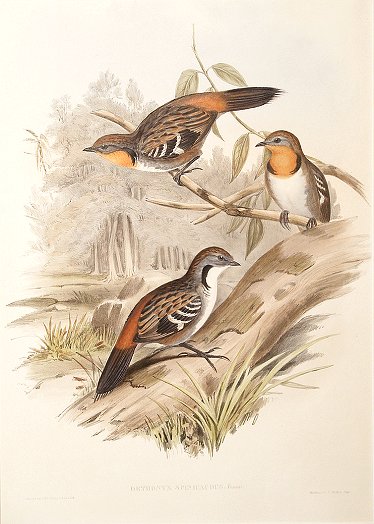Facts About Australian logrunner
The Australian logrunner is a unique bird endemic to eastern Australia. It is renowned for its distinctive method of foraging on the forest floor. Initially, it was believed to be the same species as the New Guinea logrunner, but genetic and vocalization studies have since demonstrated significant differences between the two. This bird belongs to the Orthonychidae family, which comprises only three species: the Australian logrunner, the chowchilla, and the New Guinea logrunner.
The Australian logrunner is easily identifiable by its reddish-brown head and back, black wings, and dark brown tail with distinctive feathers. These birds inhabit the rainforests of southeastern Australia, where they forage for insects and other small creatures. They have a notable vocal presence, with songs and calls likely serving to establish territory and attract mates.
One of the most fascinating aspects of the logrunner is its foraging technique. Using their spiny tails for support, they employ their feet to scrape away leaf litter, uncovering their prey. They typically live in monogamous pairs or small groups and are highly territorial.
During the breeding season, the female logrunner lays two white eggs in a large nest composed of sticks, ferns, and leaves, often camouflaged with moss and other vegetation. She incubates the eggs, which hatch in about 20-25 days. The chicks remain in the nest for 16-19 days and are fed by both parents until they are ready to fledge.
